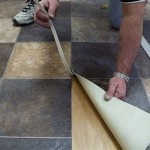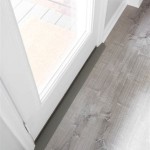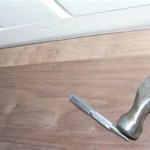Should You Put Laminate Flooring On Stairs?
Laminate flooring has become a popular choice for homeowners seeking an affordable, durable, and aesthetically pleasing flooring option. Its relatively low cost compared to hardwood, coupled with its ease of installation and variety of styles, makes it an attractive alternative for many areas of the house. However, the question arises: Is laminate flooring suitable for stairs? This exploration will delve into the considerations surrounding the use of laminate on stairs, examining its advantages, disadvantages, installation challenges, and alternative solutions.
Stairs, unlike floors in living rooms or bedrooms, experience a unique set of demands. They endure concentrated foot traffic, constant impact, and are subject to specific safety regulations. Therefore, determining the viability of laminate flooring for stairs requires careful evaluation of its suitability in meeting these demands.
Advantages of Using Laminate on Stairs
One of the primary advantages of using laminate on stairs is its cost-effectiveness. Compared to solid hardwood or engineered wood, laminate is significantly less expensive. This can be a major consideration for homeowners on a budget who still desire a sophisticated and cohesive look throughout their home. The savings can be substantial, particularly when dealing with multiple flights of stairs.
Aesthetically, laminate flooring offers a wide range of designs and finishes. Laminate can mimic the appearance of various wood species, stone, and even ceramic tile. This allows homeowners to match the stair covering to the existing flooring in adjacent rooms or to create a unique and visually appealing staircase. The variety of available patterns and colors provides design flexibility, enabling customization to suit diverse interior styles.
Laminate flooring is generally durable and resistant to scratches, dents, and stains. This is especially important for stairs, which are prone to wear and tear from daily use. The protective wear layer of laminate flooring helps it withstand the rigors of foot traffic, maintaining its appearance for a longer period compared to some other flooring options. This durability translates to less frequent replacement and reduced maintenance costs over time.
Cleaning and maintaining laminate flooring is relatively straightforward. Regular sweeping or vacuuming, combined with occasional damp mopping, is typically sufficient to keep the stairs looking clean and presentable. Unlike carpet, laminate does not harbor allergens or trap dirt easily, making it a more hygienic option, especially for households with allergy sufferers.
Disadvantages and Challenges of Laminate on Stairs
Despite its advantages, using laminate on stairs presents several challenges. One of the major concerns is safety. Laminate, particularly when smooth, can be slippery, especially when wet or worn. This poses a significant risk of slips and falls, particularly for children, the elderly, or individuals with mobility issues. Addressing this concern requires careful consideration of slip-resistant coatings or the addition of stair treads with improved traction.
Laminate flooring can be quite noisy underfoot, especially on stairs. The hollow sound produced when walking on laminate can be amplified in stairwells, creating a disruptive and unpleasant auditory experience. This noise issue can be mitigated by installing a high-quality underlayment specifically designed for noise reduction. However, even with underlayment, laminate may still be noisier than carpet or hardwood.
The installation of laminate on stairs is more complex than installing it on a flat floor. It requires precise cutting, fitting, and securing of the laminate planks to the stair treads and risers. The angles and contours of the stairs necessitate careful measurements and meticulous workmanship. Improper installation can lead to uneven surfaces, loose planks, and potential safety hazards. Installing laminate on stairs is generally not recommended as a DIY project for inexperienced homeowners and is best left to professional installers.
While laminate is generally durable, it is not impervious to damage. Excessive moisture can cause laminate to swell, warp, and delaminate. Stairs, especially those near entryways or in humid climates, can be exposed to moisture from wet shoes or spills. This moisture exposure can compromise the integrity of the laminate flooring and shorten its lifespan. Proper sealing and maintenance are crucial to prevent moisture damage.
The edges and seams of laminate flooring on stairs are particularly vulnerable to wear and tear. Over time, these edges can chip, crack, or peel, especially in high-traffic areas. This not only detracts from the appearance of the stairs but also creates potential tripping hazards. Regular inspection and repair of damaged edges are necessary to maintain the safety and aesthetic appeal of the laminate flooring.
Key Considerations for Installation and Safety
Before proceeding with laminate installation on stairs, a thorough assessment of the existing staircase is essential. The subfloor must be level, stable, and free of any defects. Any repairs or modifications to the subfloor should be completed before installing the laminate. Uneven or unstable subfloors can compromise the integrity of the laminate flooring and lead to premature failure.
Choosing the appropriate type of laminate flooring is crucial. Laminate flooring specifically designed for stairs is typically thicker and more durable than standard laminate. Look for laminate with a high abrasion class (AC) rating, indicating its resistance to wear and tear. Also, consider laminate with a textured surface or a slip-resistant coating to enhance safety.
Proper installation techniques are paramount for ensuring the safety and longevity of laminate flooring on stairs. The use of stair nosings is essential to provide a secure and finished edge to the treads. Stair nosings not only protect the edges of the laminate but also enhance the slip resistance of the stairs. Securely fastening the laminate planks to the treads and risers using construction adhesive and fasteners is crucial to prevent movement and ensure stability.
Implementing safety measures is critical to prevent accidents on laminate-covered stairs. Adding non-slip stair treads or runners can significantly improve traction and reduce the risk of slips and falls. These treads or runners can be attached to the laminate surface using adhesive or double-sided tape. Installing handrails on both sides of the staircase provides additional support and stability for users. Adequate lighting is also essential to ensure visibility on the stairs, especially at night.
Regular maintenance is necessary to keep laminate flooring on stairs in good condition. Sweep or vacuum the stairs regularly to remove dirt, dust, and debris. Clean spills immediately to prevent staining and moisture damage. Avoid using abrasive cleaners or excessive water when cleaning laminate flooring. Inspect the stairs regularly for any signs of damage, such as chipped edges, loose planks, or water damage. Repair any damage promptly to prevent it from worsening and compromising the safety of the stairs.
Alternative flooring options for stairs should be considered if concerns about safety, noise, or moisture persist. Carpet is a popular choice for stairs due to its slip resistance, noise reduction, and cushioning properties. Hardwood is another durable and aesthetically pleasing option, although it can be more expensive than laminate. Engineered wood offers a balance of durability and affordability. Each option presents its own set of advantages and disadvantages, and the choice ultimately depends on individual preferences, budget, and lifestyle.
The decision of whether or not to install laminate flooring on stairs involves a careful balancing of factors. While laminate offers cost savings and aesthetic versatility, it also presents challenges related to safety, noise, and installation complexity. By carefully considering these factors and taking appropriate precautions, homeowners can determine whether laminate flooring is a suitable option for their stairs. Consulting with a professional flooring contractor can provide valuable insights and guidance in making an informed decision.

How To Install Laminate Flooring On Staircase Step By Guide

Can You Laminate Stairs The Pros Cons

How To Fit Laminate Flooring On The Stairs Esb

How To Install Vinyl Plank Flooring On Stairs In 6 Steps Inc

Laminate On Stairs With Bad Installation

Stairway Makeover Swapping Carpet For Laminate The Lilypad Cottage

Value Carpets Flooring Installing Laminate On Stairs

How To Install Laminate Flooring On Stairs Direct Wood

How To Install Laminate Flooring On Stairs 13 Steps

Installing Laminate Flooring On Stairs Diy
Related Posts








